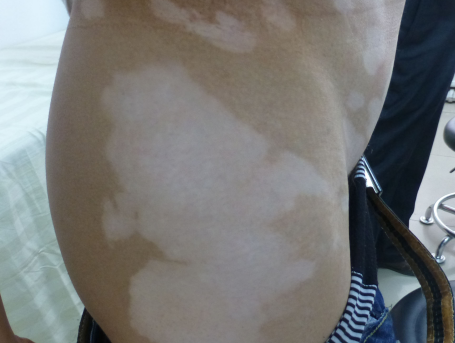How Can People Cope With The Emotional And Psychological Aspects Of Vitiligo?
Although vitiligo is usually not harmful medically, its emotional and psychological effects can be devastating.
White patches of vitiligo can affect emotional and psychological well-being and self-esteem.

White patches of vitiligo can affect emotional and psychological well-being and self-esteem. People with vitiligo can experience emotional stress, particularly if the condition develops on visible areas of the body (such as the face, hands, arms, and feet) or on the genitals. Adolescents, who are often particularly concerned about their appearance, can be devastated by widespread vitiligo. Some people who have vitiligo feel embarrassed, ashamed, depressed, or worried about how others will react.
Fortunately, there are several strategies to help people cope with vitiligo. Also, various treatments – discussed in the next section – can minimize, camouflage, or, in some cases, even eliminate white patches. First, it is important to find a doctor who is knowledgeable about the disorder and takes it seriously. You must let your doctor know if you are feeling depressed, because doctors and other mental health professionals can help people deal with depression. You should also learn as much as possible about the disorder and treatment choices so that you can participate in making important decisions about your medical care.
Because vitiligo may be associated with pernicious anemia (a condition in which an insufficient amount of vitamin B12 is absorbed from the gastrointestinal tract) or hyperthyroidism (an overactive thyroid gland), the doctor may also take a blood sample to check the blood cell count and thyroid function. For some patients, the doctor may recommend an eye examination to check for uveitis (inflammation of part of the eye), which sometimes occurs with vitiligo. A blood test to look for the presence of antinuclear antibodies (a type of autoantibody) may also be done. This test helps determine if the patient has another autoimmune disease.



Leave a Comment